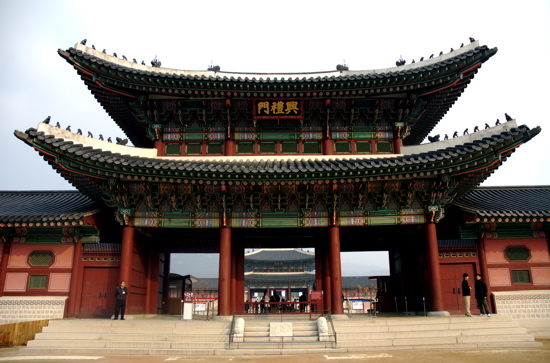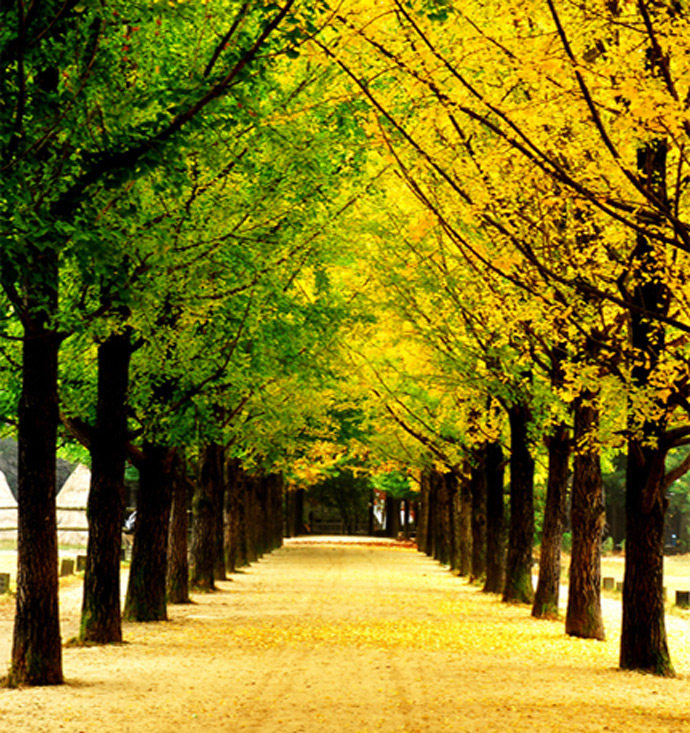
SEOUL
--------------------
atrraction

- Gyeongbukgong Palace
The name of the palace, Gyeongbokgung, translates in English as “Palace of Shining Happiness.” The premises were destroyed by fire at the time of Japanese occupation from 1592-1598. However, all of the palace’s 7,700 rooms were later restored under the leadership of Heungseondaewongun during the reign of King Gojong.
The National Palace Museum of Korea is located south of Heungnyemun Gate, and the National Folk Museum is located east within Hyangwonjeong.
March to October 09:00-18:00 / November to February 09:00-17:00.
Closed on Tuesday
By Subway : Exit 5 – Gyeongbokgung Station Line 3

- Namsan Tower
Sunday-Thursday
Observatory: 10:00-23:00
Restaurant: 11:00-23:00
Teddy Bear Museum: 10:00-22:00 (Last entry: 21:00)
Friday-Saturday
Observatory: 10:00-24:00
Restaurants (n.GRILL/Hancook): 11:00-23:00
The place dining: 11:00-24:00 (Last seating: 23:00)
Teddy Bear Museum: 10:00-22:00
By Subway & Bus
Exit 3 – Myeongdong Station Line 4. Take the wide road next to 7 Eleven convenience store, then walk straight to the left of Pacific Hotel & keep walking up in the direction of Mt. Namsan where the cable car platform is situated.

Observatory: 10:00-23:00
Restaurant: 11:00-23:00
Teddy Bear Museum: 10:00-22:00 (Last entry: 21:00)
Friday-Saturday
Observatory: 10:00-24:00
Restaurants (n.GRILL/Hancook): 11:00-23:00
The place dining: 11:00-24:00 (Last seating: 23:00)
Teddy Bear Museum: 10:00-22:00
By Subway & Bus
- Exit 2 – Chungmuro Station Line 3 or 4. Then take Bus 2 (08:00-24:00/5min intervals) or Bus 5 (07:30-23:50/15min intervals) to N Seoul Tower.
- Exit 4 – Itaewon Station Line 6. Then take Bus 3 (08:00-23:00/10min intervals) to N Seoul Tower.
Exit 3 – Myeongdong Station Line 4. Take the wide road next to 7 Eleven convenience store, then walk straight to the left of Pacific Hotel & keep walking up in the direction of Mt. Namsan where the cable car platform is situated.

- Cheong Wa Dae
The signature markings of the Presidential Residence of Cheong Wa Dae are its blue tiles. It is the first thing that catched one’s attention upon entering the premises. The blue tiles and the smooth roof blend beautifully with Mt. Bugaksan in the backdrop.
The unique buildings Cheong Wa Dae are comprised of the Main Office, Yeongbingwan (Guest House), Chunchugwan (Spring and Autumn Pavilion), Nokjiwon (Green grass), the Mugunghwa (Rose of Sharon) Valley, and the Seven Palaces.
There is also a weekly Military Drill Demonstration & Parade by the honor guards every Saturday 10am
Tours start at 10:00, 11:00, 14:00, and 15:00
Summer season (Jul. 1-Sep. 16): 10:00, 11:00, 15:00, 16:00
Closed on Sunday, Monday & Holidays.
By Subway : Exit 5 – Gyeongbokgung Palace Station Line 3. Walk 10 minutes.

Situated between by two palaces, Gyeongbokgung to the west and Changdeokgung to the east, this village has the largest cluster of privately owned traditional Korean wooden homes or hanok in Seoul.
The Bukchon area is a traditional residential area in Seoul that boasts 600 years of history. Its location reflects the views of neo-Confucianism, regarding the world and nature, during the Joseon Dynasty.
Hanok architecture places great emphasis on the topographical features of the land on which it is built. Structural arrangements, layouts, and other spatial aesthetics are major concerns here, as are the styles of the buildings themselves.
Mon~Fri (9:00 ~ 18:00)
Sat~Sun (9:00 ~ 17:00)
By Subway : Exit 2 – Anguk Station Line 3. Walk straight for about 300m.

Korea’s last emperor Sunjong passed away on these grounds in 1926, and it’s commonly known that members of royal descendants lived in Nakseonjae, a cluster of unpainted palace buildings well into the late ‘80s.
The palace had a great influence on the development of Korean architecture, garden and landscape planning, and related arts, for many centuries. It reflects sophisticated architectural values, harmonized with beautiful surroundings.
April–October: 09:00-18:30 / March & November: 09:00-17:30 / December–February: 09:00-17:00
By Subway
Exit 3 – Anguk Station Line 3. Walk straight for 5min.
Exit 7 – Jongno 3(sam)-ga Station Line 1, 3 or 5. Go straight along Donhwamun-ro Street for 10min.

Summer season (Jul. 1-Sep. 16): 10:00, 11:00, 15:00, 16:00
Closed on Sunday, Monday & Holidays.
By Subway : Exit 5 – Gyeongbokgung Palace Station Line 3. Walk 10 minutes.

- Buckhon Hanok Village
Situated between by two palaces, Gyeongbokgung to the west and Changdeokgung to the east, this village has the largest cluster of privately owned traditional Korean wooden homes or hanok in Seoul.
The Bukchon area is a traditional residential area in Seoul that boasts 600 years of history. Its location reflects the views of neo-Confucianism, regarding the world and nature, during the Joseon Dynasty.
Hanok architecture places great emphasis on the topographical features of the land on which it is built. Structural arrangements, layouts, and other spatial aesthetics are major concerns here, as are the styles of the buildings themselves.
Mon~Fri (9:00 ~ 18:00)
Sat~Sun (9:00 ~ 17:00)
By Subway : Exit 2 – Anguk Station Line 3. Walk straight for about 300m.

- Changdokgung Palace
Korea’s last emperor Sunjong passed away on these grounds in 1926, and it’s commonly known that members of royal descendants lived in Nakseonjae, a cluster of unpainted palace buildings well into the late ‘80s.
The palace had a great influence on the development of Korean architecture, garden and landscape planning, and related arts, for many centuries. It reflects sophisticated architectural values, harmonized with beautiful surroundings.
April–October: 09:00-18:30 / March & November: 09:00-17:30 / December–February: 09:00-17:00
By Subway
Exit 3 – Anguk Station Line 3. Walk straight for 5min.
Exit 7 – Jongno 3(sam)-ga Station Line 1, 3 or 5. Go straight along Donhwamun-ro Street for 10min.

- Nami Island
Namiseom Island was formed as a result of the construction of the Cheongpyeong Dam. It is a half moon shaped (462,809㎡) isle, and on it is the grave of General Nami, who led a great victory against the rebels in the 13th year of the 7th king of the Joseon Dynasty, King Sejo (reign 1455 ~ 1468).
Daily 7:30am to 9:30pm
By Subway + Train + Taxi
Exit Sangbong Station Line 7. Transfer to Gyeongchun Line Train to Gapyeong Station. Take a taxi to Gapyeong Wharf (Just say Nami Island to Driver will do. Taxi cost KRW3,000 to KRW4,000 per way)

- Mount Seorak
The Daechongbong Peak of Seoraksan reaches 1,708 metres (5,603 feet). The Taebaek mountain chain is often considered the backbone of the Korean peninsula.
By Bus
1. Take intercity bus from Dong Seoul Bus Terminal (Gangbyeon Station Line 2) to Sokcho every 30 minutes.From Sokcho or Sokcho Express Bus Terminal, take city bus No. 7 or 7-1 and get off at the entrance of Mt. Seoraksan (30 minute ride).
2. From Sokcho Intercity Bus Terminal, taxi takes 15-20 minute to the entrance of Mt. Seoraksan.
Love,
The Dazzling Ladybie

No comments:
Post a Comment